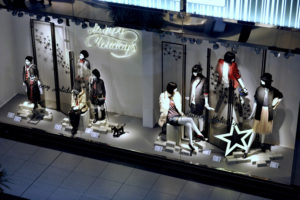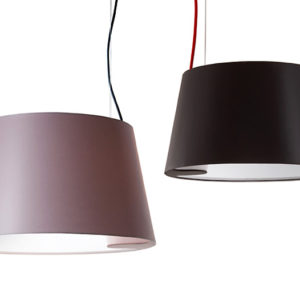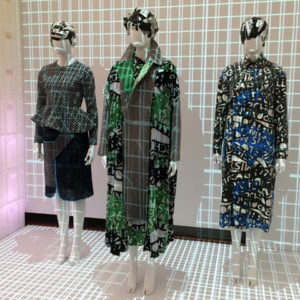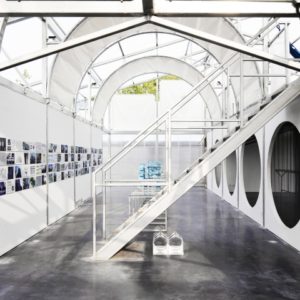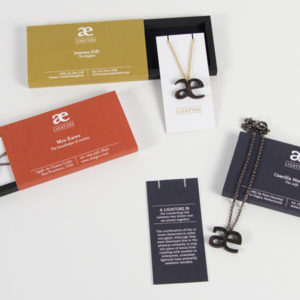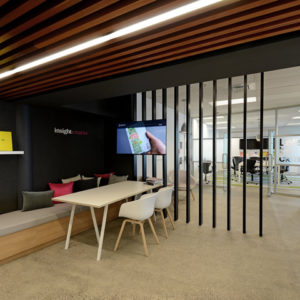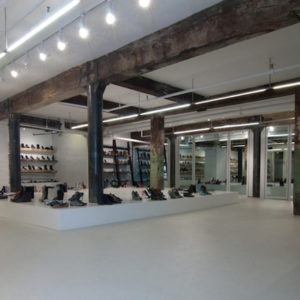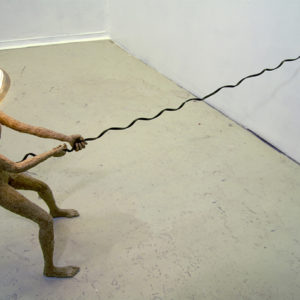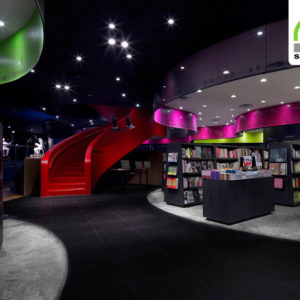
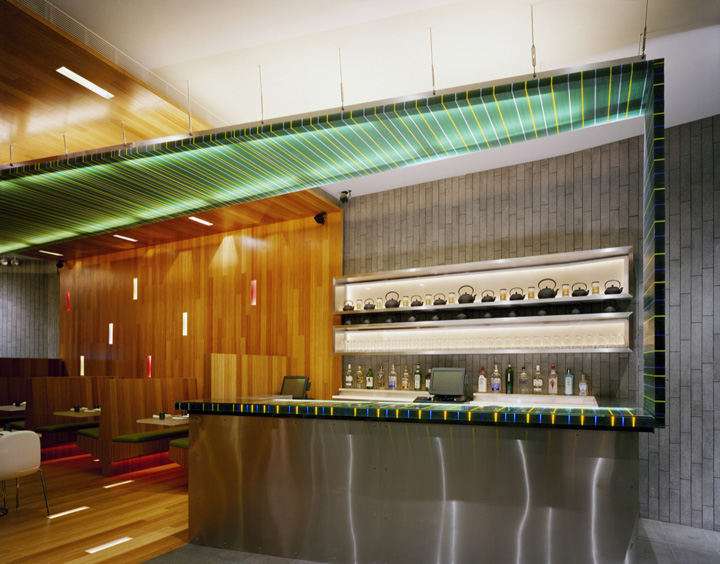

This 2000 sqf Chinese restaurant occupies a floor plan typical in New York, in which the middle of the plan is a bottleneck — a result of lightwells located on each side of the tenement building. Rather than force the design to hide this distinction of the front and the back, the approach for Xing was to accentuate the unique nature of each of the spaces. Employing a logic derived from the Surrealists’ game of the Exquisite Corpse, the space is composed of four distinct, yet interlocked areas, each defined by a specific material.
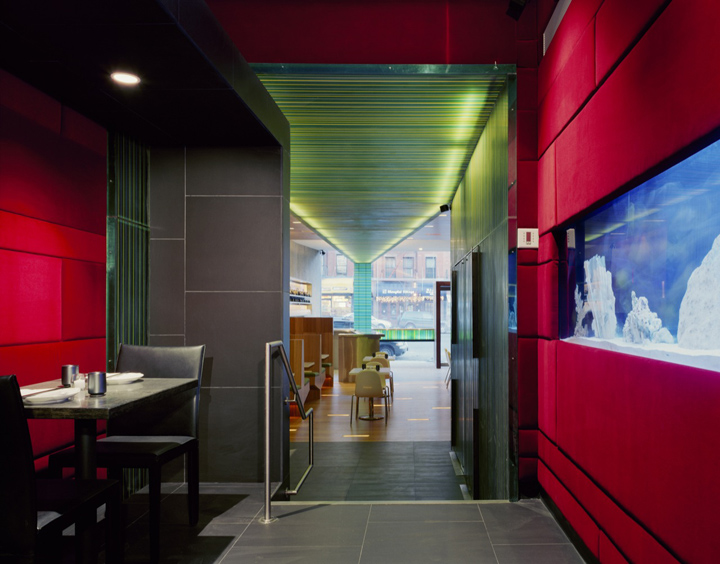
The transition of materials moves from hard at the most public (stone and bamboo) to soft at the most private (velvet.) The front bar area is layered stone. The front seating area with booths is a wrapper of bamboo. The next zone is a corridor that contains the bathrooms and a wait station. This corridor is made from over 10,000 linear feet of stacked 1/4” wide by 2” deep colored acrylic, which lines the wall, the floor and ceiling.
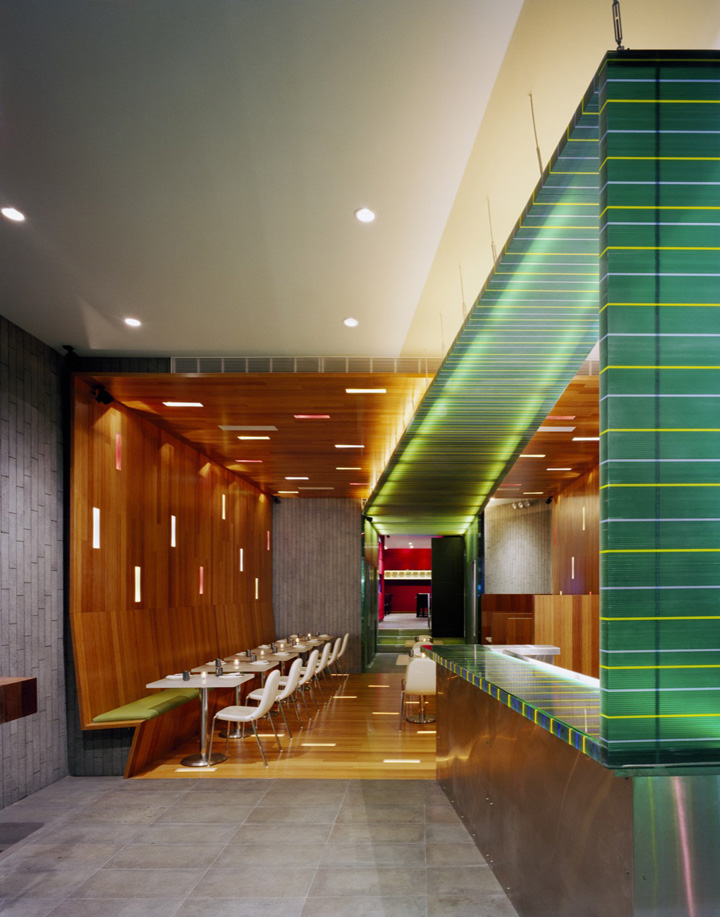
This layered acrylic ceiling extends into the front dining room as a light canopy, and drops down to connect to the top surface of the bar. The back dining area is defined by red velvet panels. This back room is an inhabitable padded booth, where there is no distinction between the space and the seats. Located at the transition between the acrylic and the velvet room is an oversized fish tank, whose surface is flush with the velvet panels.
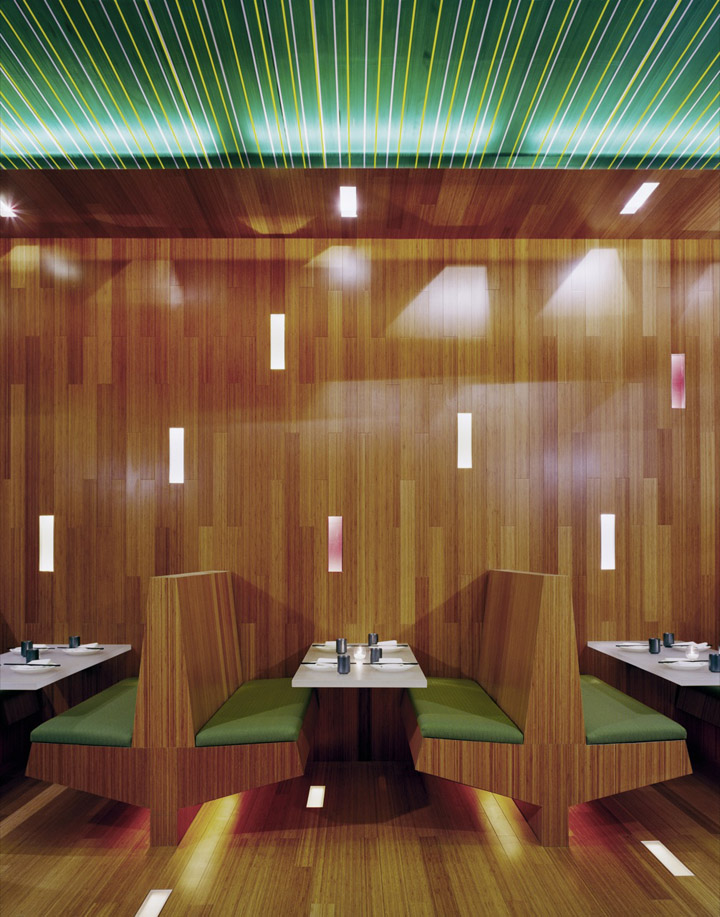
Throughout the restaurant, lights are embedded within the materials, synthetically linking lights and surfaces. Rather than design through adding fixtures onto walls or ceilings, in Xing, the embedded lights are used to tease out a richness and depth of the architectural surfaces. In the bamboo room, lights are placed within slots the width of the bamboo strips in the walls, ceiling and floors.
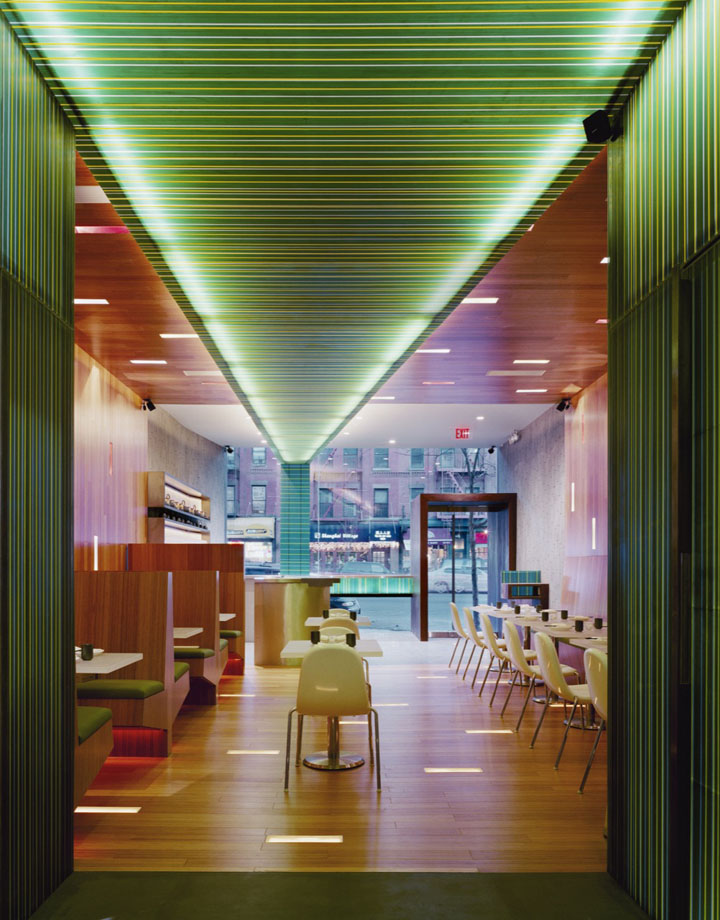
Dimmable linear incandescent lights line both sides of the acrylic canopy, allowing the acrylic strips to glow with differing intensity. Light from the bathrooms emits from the acylic walls that line the central corridor. Shadows from bathroom occupants play upon these surfaces.
Designed by Lewis Tsurumaki Lewis Architects
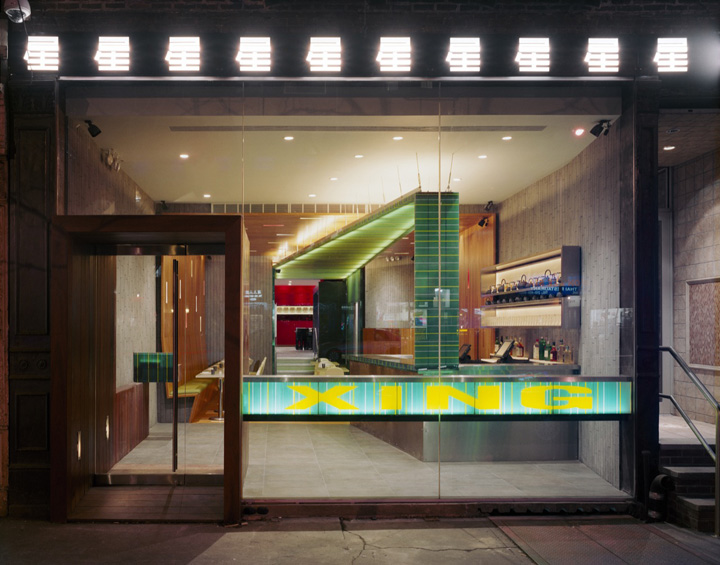
http://www.archdaily.com/137589/xing-restaurant-ltl-architects/





Add to collection
